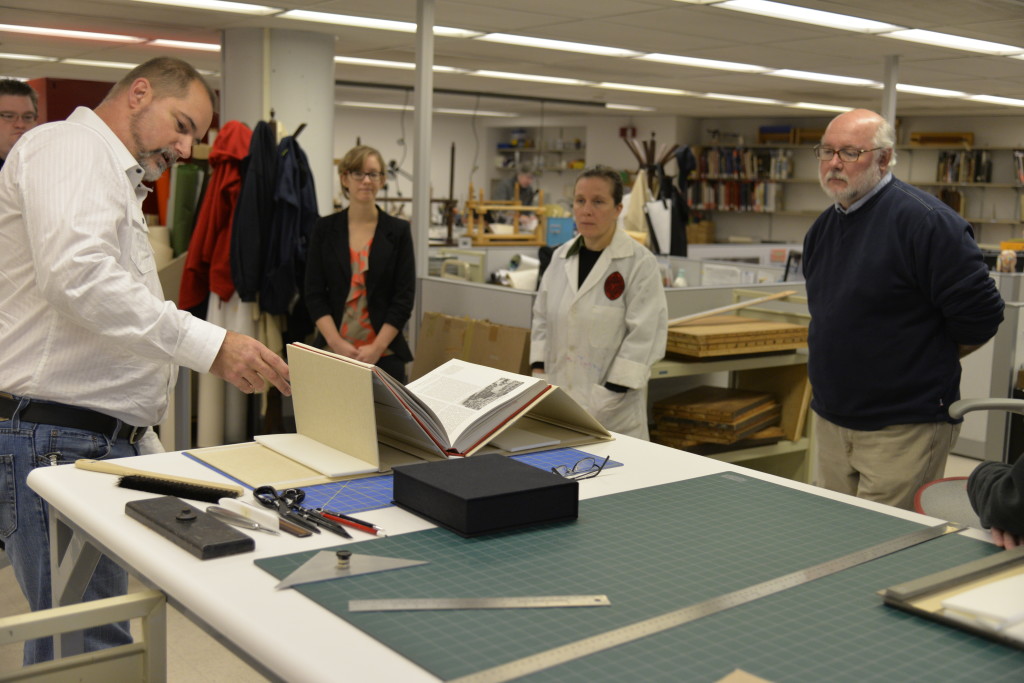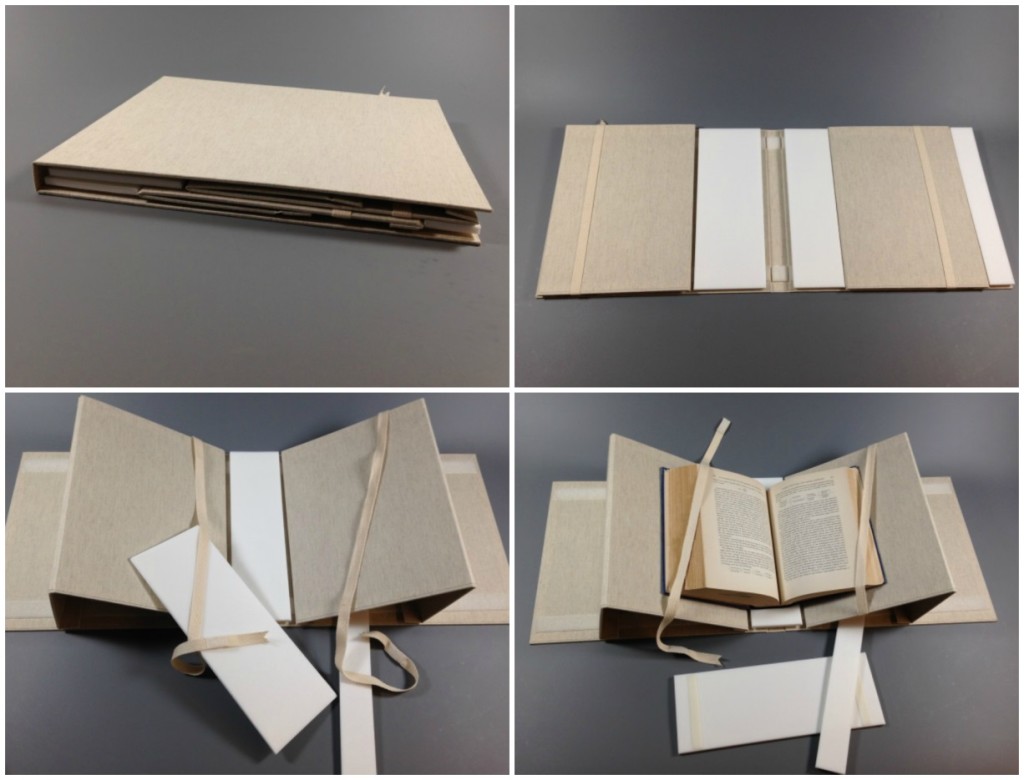Custom Collapsible Cradle in a Corrugated Box!
We have many occasions to use cradles. Including, in the lab while working on delicate materials and for viewing the text of fragile bindings. In an effort to create a new standard for the lab to store with a book, I revisited the construction of a collapsible cradle that fits inside a corrugated clamshell box.
View of clamshell when lid is opened: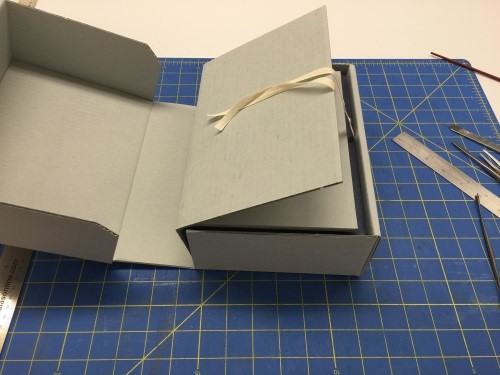
Opening the cradle by lifting the cloth tapes: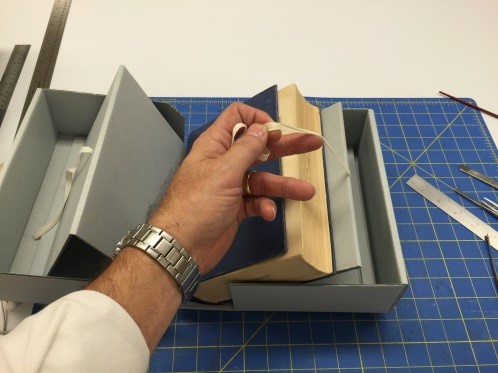
Obtuse (left) and acute (right) arm openings are adjustable: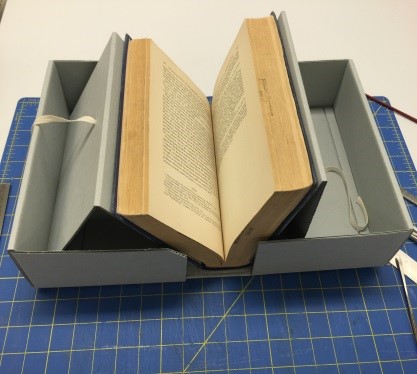
The integral cradle is removable for display! 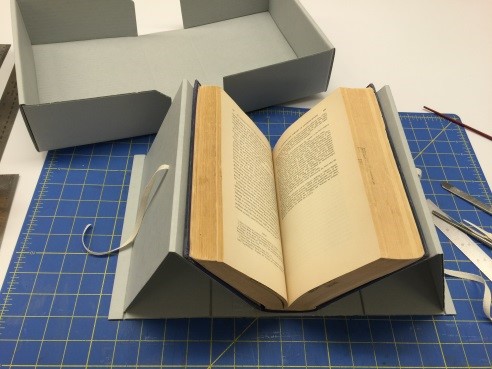
I am intrigued by this integral cradle system for a few important reasons:
- The cradle is custom fit for the individual book’s opening and is stored safely with the book in the corrugated clamshell so it won’t become lost.
- The cradle can be made adjustable to accommodate the book’s special handling needs by adding in additional notches.
- The cradle has a base, making it removable from the box. This enables diversity in placement of the supported book. For example, librarians can remove the cradle from the box for exhibition.
- This system is light, yet durable.
- This system is fast and easy to create.
- This system can be shelved with other books making it easily stored and accessible.
Considering all the cradles I have made so far, this one is by far the easiest and fastest to complete!
For a “one size fits all” solution, check out our blog on Elizabeth’s Rideout’s Collapsible Book Cradle.
It has been fun to explore solutions for this support mechanism to strengthen our arsenal of weaponry in the war of conservation!
Chris Voynovich (PLCH) – Conservation Technician
